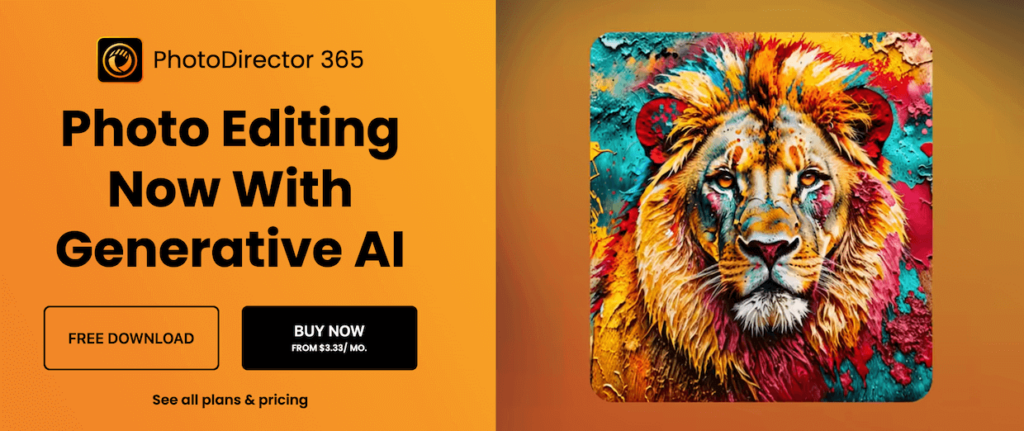Managing a growing collection of photos can quickly become overwhelming without the right tools. Whether you’re a professional photographer or a hobbyist, photo management software is a game-changer. It helps you stay organized, improve your workflow, and protect your images while saving time and effort.
Photo management tools have evolved significantly from organizing massive libraries to offering editing features and cloud storage. But with so many options on the market, how do you choose the best one for your needs? Luckily, we’ve done the homework for you!
In this article, we’ll explore the best photo management software available, diving into key features, pros and cons, pricing, and what makes each one stand out. Whether you’re a pro looking for an all-in-one system or a hobbyist needing a simple, budget-friendly option, we’ll help you find the perfect match.
In This Article
- What Is Photo Management Software?
- Criteria for Choosing the Best Photo Management Software
- Our Top Picks for the Best Photo Management Software
- 1. Adobe Lightroom
- 2. Adobe Bridge
- 3. Google Photos
- 4. ACDSee Photo Studio Ultimate
- 5. ON1 Photo RAW
- 6. digiKam
- 7. Capture One Pro
- 8. MAGIX Photo Manager Deluxe
- 9. CyberLink PhotoDirector 365
- 10. Movavi Photo Editor
- 11. Excire Foto
- 12. FastStone Image Viewer
- BONUS: Envira Gallery for Photo Management on WordPress
- 1. Adobe Lightroom
- Tips for Optimizing Your Photo Management
What Is Photo Management Software?
Photo management software is designed to help you organize, manage, store, and protect your photos. It’s an essential tool for photographers with large libraries, allowing you to find specific images within seconds. While most photo management software provides basic organizing tools, many also offer advanced features, such as editing and manipulation options.
Essentially, if you don’t want to spend hours every time you need to find a picture from five years ago, a photo organizing tool can help, enabling you to be more productive and efficient. Let’s explore some key benefits:
- Enhanced Organization: With features like tagging, metadata editing, and AI-powered search, you can find any image quickly, no matter how large your library is.
- Cloud Storage and Syncing: Many modern tools offer cloud integration, ensuring your photos are securely backed up and accessible across devices. For example, Adobe Lightroom’s Creative Cloud allows you to edit on your desktop and continue seamlessly on your phone or tablet.
- Streamlined Workflow: Batch editing and automation features reduce the time spent on repetitive tasks, letting you focus more on creativity.
- Preservation of Image Quality: Unlike generic file management systems, photo management software retains high-resolution image quality and metadata during imports and exports.
- Easy Sharing: Many tools offer one-click sharing and export options for social media or client proofing.
Whether you’re a professional photographer managing thousands of images or an enthusiast looking to keep your library tidy, photo management software can help you stay organized, save time, and focus on what you do best—capturing stunning photos.
Criteria for Choosing the Best Photo Management Software
When evaluating photo management software, it’s essential to consider the following factors to find the right fit for your needs:
- Library Size and Performance: If you manage an extensive library with tens of thousands of photos, choose software that can handle bulk uploads and maintain speed without crashes. Look for advanced indexing and organizational features.
- Organizational Tools: Consider software with robust tagging, metadata, and sorting options. AI-powered tools like facial recognition or object detection can save time when organizing images.
- Editing Needs: Some photo management tools offer built-in editing capabilities, from basic tweaks like cropping to advanced edits like HDR adjustments. If editing is a priority, software like Adobe Lightroom or Capture One is worth considering.
- Cloud Storage and Syncing: Cloud storage is invaluable for backing up photos and accessing them across multiple devices. Ensure the software integrates with cloud services or offers its own cloud solution for seamless syncing.
- Integration with Other Tools: If you use editing software like Photoshop or rely on plugins for workflow automation, check for compatibility with these tools.
- Budget and Pricing: Pricing varies significantly among tools. While some, like Google Photos, offer free plans, others, like Lightroom, charge monthly or annual fees. Evaluate what features you need and whether the cost aligns with your budget.
When narrowing down your choices, keeping these factors in mind will help you find the software that best suits your workflow and photography goals.
Our Top Picks for the Best Photo Management Software
1. Adobe Lightroom

If Adobe Lightroom is your go-to photo editing software, you’re probably already aware of its organizing power. As the industry-standard software for professional photographers, Lightroom offers everything from robust editing and organization to AI-powered features and cloud syncing.
Why We Like It
- Extensive editing tools offer unparalleled flexibility.
- Bulk importing with multiple sorting features such as keywords, star ratings, color coding, and auto-tagging by facial recognition or location data.
- Includes AI features for editing, organizing, and searching for photos, powered by Adobe Firefly and Sensei.
- All Adobe Lightroom plans include Lightroom CC (Lr), the cloud-based version, and Lightroom Classic (LrC), the desktop-optimized version with local storage.
- The Lightroom Mobile app is impressive for editing on the go, and cloud-based storage makes it easy to sync across multiple devices.
- Integration with other Adobe products and third-party plugins makes it easy to expand the functionality.
Potential Drawbacks
- Requires an Adobe Creative Cloud subscription, which may be steep for casual users.
- Syncing extensive collections across all devices may require additional storage, which can get expensive.
- The desktop version can be resource-heavy, especially on older machines.
Pricing
Plans start at $9.99/month for Lightroom, which includes 1TB of cloud storage. Alternatively, the Adobe Photography plan bundles Lightroom with Photoshop for $19.99/month, or you can purchase the Creative Cloud All Apps plan starting at $29.98/month.
2. Adobe Bridge

Adobe Bridge is undoubtedly one of the best photo management programs for photographers and creatives who work with large image libraries. Designed as a centralized file organizer, it seamlessly integrates with Adobe’s suite of creative apps, making it an excellent choice for users who need a straightforward way to manage files across projects.
Why We Like It
- Offers robust batch processing tools, including batch renaming, metadata editing, and resizing.
- The navigation layout is super easy to maneuver and provides multiple views, offering centralized access to all your files, including images, videos, and other creative assets.
- You can preview multiple file formats, including raw images, without opening another program.
- Seamless integration with Adobe apps like Photoshop, InDesign, and After Effects makes it a versatile tool for multimedia creators, especially those who want to upload and license their work on Adobe Stock.
Potential Drawbacks
- Lacks advanced editing features, so it’s best used alongside software like Lightroom and Photoshop.
- No dedicated cloud storage or syncing options, which may be a limitation for photographers working across multiple devices.
- Using Camera Raw to process raw captures requires a Creative Cloud subscription.
- It can be resource-intensive when handling vast libraries.
Pricing
Adobe Bridge is free, but some features, like Adobe Stock integration, Creative Cloud workflows, and Camera Raw processing, require an Adobe Creative Cloud subscription, which starts at $9.99/month.
3. Google Photos

Google Photos is a popular photo management and storage solution, especially for casual users and those who prefer a cloud-first approach. With its intuitive interface and AI-powered features, this free photo management system is great for simple and efficient picture organization. That said, professional photographers or users with advanced organization and editing needs may find it more suitable as a complementary tool rather than a primary solution.
Why We Like It
- Artificial intelligence conveniently organizes your albums and photos using facial recognition, location tagging, and object detection.
- Automatic syncing and backups ensure your photos are securely stored and accessible from any device.
- Built-in editing tools allow basic adjustments like cropping, color corrections, and filters.
- Easy sharing options with private albums and shared libraries.
- Integration with Google’s ecosystem, including Gmail, Google Drive, and Android devices.
Potential Drawbacks
- No professional-level editing features or advanced organizational tools like metadata editing.
- Requires a Google One subscription for storage beyond 15GB, which is shared across all Google services.
- Lacks a desktop application for offline organization, relying heavily on cloud storage.
Pricing
Google Photos provides 15GB of free storage shared across Google services. For additional storage, plans start at $1.99/month for 100GB or $9.99/month for 2TB via Google One.
4. ACDSee Photo Studio Ultimate

ACDSee Photo Studio Ultimate is a versatile photo management and editing software designed for photographers and creative professionals who need robust organizational tools and powerful editing features in one package. Known for its speed and flexibility, it’s an excellent alternative to Adobe Lightroom and other subscription-based tools.
Why We Like It
- An all-in-one program that combines advanced photo management with non-destructive editing capabilities for popular file formats, such as RAW, TIFF, JPG, PSD, and more.
- Offers AI features and multiple organizational tools like face detection, keyword tagging, color labels, ratings, and hierarchical folder structures.
- Lightning-fast performance for searching, browsing, and processing large photo collections.
- Customizable presets for editing workflows help you save time on repetitive tasks.
- You can purchase a subscription with cloud storage or integrate the standalone software with services like Google Drive, Dropbox, and OneDrive.
Potential Drawbacks
- The interface can feel overwhelming for beginners due to the abundance of features.
- Some editing tools aren’t as polished or advanced as those in Adobe Lightroom or Capture One.
- The Mac version may have fewer features, and some users report a less intuitive interface than the Windows version.
Pricing
ACDSee Photo Studio Ultimate is available with a one-time purchase, starting at $149.99. Alternatively, a subscription plan, which includes 200GB of cloud storage, video editing software, and additional device installations, starts at $8.90/month.
5. ON1 Photo RAW

ON1 Photo RAW is a photo management and editing software for photographers looking to combine Lightroom, Photoshop, and organization tools into an all-in-one, no-subscription software. With extensive editing features, AI-powered tools, and versatile photo organization, it’s a great alternative to Adobe products. The program makes sorting and finding your photos easy and is a good option for professionals dealing with many images.
Why We Like It
- Offers non-destructive RAW editing with advanced tools like AI masking, HDR, and panorama stitching.
- Combines photo management and editing in one platform, eliminating the need for multiple apps.
- Includes plugins and AI-powered tools like NoNoise AI for noise reduction, Sky Swap AI for realistic sky replacements, and AI preset recommendations to apply filters based on your preferences.
- Cataloging tools include keywording with sub-keywords, metadata editing, batch renaming, rating, and album creation for effective organization.
- You can purchase a subscription with storage or integrate the standalone software with popular cloud services for backups and syncing, including SmugMug.
Potential Drawbacks
- The interface can feel cluttered and has a steeper learning curve, requiring some adjustment for new users.
- Performance may slightly lag when working with large libraries or high-resolution RAW files.
- Limited community and tutorial resources compared to Adobe’s ecosystem.
Pricing
ON1 Photo RAW is available with a one-time purchase, starting at $99.99. Alternatively, an ON1 Everything subscription starts at $7.99/month, which includes cloud storage and the ability to launch ON1 plugins inside Adobe Lightroom and Photoshop.
6. digiKam

digiKam is a free, open-source photo management software that can handle more than 100,000 images and works across Windows, Mac, and Linux. With its robust organizational tools and extensive metadata management, digiKam is a favorite among those who prefer open-source software with advanced features.
Why We Like It
- Comprehensive organizational tools, including a folder system, face detection, geotagging, and support for advanced filtering by metadata (EXIF, XMP, IPTC).
- Batch processing for tasks like renaming, resizing, and assigning tags.
- Supports a wide range of file formats, including video files, which is rare in free software.
- Editing tools include cropping, color correction, sharpening, curve adjustment, panorama stitching, and lens corrections.
- Ability to extend the functionality using plugins called DPlugins or with GIMP integration for further editing.
Potential Drawbacks
- The interface can feel outdated and may be intimidating for new users, especially compared to more polished commercial software.
- Limited cloud storage and syncing options—you’ll need to manage your backups and cloud solutions for multi-device access.
- When handling large libraries or high-resolution images, performance can lag, especially on older hardware.
Pricing
digiKam is free to download and use, with no subscription or hidden fees. Users can make donations to support development, but there are no costs associated with the software.
7. Capture One Pro

Capture One Pro is a high-end photo management and editing software tailored for professional photographers and advanced users. Known for its exceptional RAW processing and tethered shooting capabilities, it’s a go-to tool for many studio, commercial, and portrait photographers who want more precision and control.
Why We Like It
- Exceptional RAW processing and support for multiple camera profiles delivers unparalleled image quality, fine detail, and vibrant color accuracy for specific camera brands.
- The customizable interface allows users to adapt the workspace to their specific needs.
- Includes advanced editing tools like layers, masks, color grading, a dedicated skin tone channel, and AI tools for portrait shoots.
- Offers powerful organizational features, including session-based workflows, catalog systems, automatic groupings, and culling tools to manage large photo collections.
- Fast and reliable tethered shooting will feed photos straight into the software for editing, and Capture One Live allows remote client collaboration while shooting on set.
Potential Drawbacks
- The software has a steeper learning curve, making it best reserved for professional studio and commercial photographers who are more experienced with editing.
- Has a higher price point, which may deter casual users or hobbyists.
- While the software shines in certain areas like raw processing and tethered shooting, its organization features aren’t as comprehensive.
Pricing
Capture One Pro is available with a one-time purchase of $299.99 or as a subscription starting at $10.44/month. Check out our comparison of Lightroom vs. Capture One.
8. MAGIX Photo Manager Deluxe

MAGIX Photo Manager Deluxe is a budget-friendly photo and video management software for Windows users. With intuitive tools for organizing and enhancing your library, it offers an easy way to manage your media without a steep learning curve or high price tag.
Why We Like It
- Easy-to-use software that supports photos and videos, making it ideal for casual users like photography hobbyists and travel bloggers.
- A built-in slide show creator and travel route animations to share location-based photography.
- Includes organizational features like facial recognition, keyword tagging, theme categorization, and duplicate file detection using AI to streamline your library.
- Basic filters and photo editing tools for quick adjustments like cropping, red-eye removal, and perspective correction.
- Allows imports from scanners or cameras, mobile phones, or cloud services.
Potential Drawbacks
- Limited editing features and outdated interface compared to software like Lightroom.
- Lacks cloud storage and syncing capabilities, making it less ideal for multi-device workflows.
- Primarily built for Windows.
Pricing
MAGIX Photo Manager Deluxe is one of the most affordable options for photo management. It’s available with a one-time purchase of £34.99.
9. CyberLink PhotoDirector 365

CyberLink PhotoDirector 365 is similar to ON1 Photo RAW as it’s designed to be an all-in-one photo management and editing software. Its user-friendly interface, organizational tools, advanced editing capabilities, and creative AI features make it a solid option for professionals and enthusiasts alike.
Why We Like It
- AI-powered editing tools simplify tasks like background removal, sky replacement, and object detection.
- Includes layer-based editing, similar to Photoshop, allowing for greater creative flexibility.
- Comprehensive organizational tools, including face tagging, keyword tagging, and album creation, help streamline photo libraries.
- Built-in support for animated GIF creation and other multimedia features for creative projects.
- Integration with CyberLink’s cloud storage ensures easy access and backups across multiple devices.
Potential Drawbacks
- The interface can feel overwhelming for beginners due to the breadth of features.
- Some advanced features, like AI tools, may not match the precision of dedicated editing software like Photoshop.
- Performance may slightly lag on older machines or when handling large photo libraries.
Pricing
CyberLink PhotoDirector 365 is available as a subscription, which includes cloud storage, regular feature updates, plugin access, and Getty Images for stock photos, starting at $59.99/year.
10. Movavi Photo Editor

Movavi Photo Editor is a user-friendly tool designed for beginners and casual users who need a simple solution for editing and organizing their photos. While it leans more toward photo editing and may not meet the needs of professional photographers, it’s an excellent tool for quick edits and light organization tasks.
Why We Like It
- The intuitive interface makes it easy for beginners to get started without a steep learning curve.
- Groups similar photos together and supports batch editing to speed up repetitive tasks.
- Essential editing tools like cropping, resizing, retouching, and background removal.
- AI-powered tools simplify tasks like object removal, color correction, retouching, old image restoration, and more.
- Basic organizational features like tagging and sorting allow for easy navigation of smaller photo libraries.
- Lightweight software that runs smoothly, even on older or less powerful machines.
Potential Drawbacks
- Focused more on editing than photo management, so it lacks advanced organizational tools like metadata editing and keyword tagging.
- Isn’t as feature-rich as more robust tools like Lightroom.
- Although some plans include cloud storage, syncing and backup options are more limited.
Pricing
Movavi Photo Editor starts at $49.95/year, or you can purchase a lifetime license starting at $74.95.
11. Excire Foto

Excire Foto is an innovative photo management software that uses advanced AI technology to help photographers quickly organize and search their image libraries. While it doesn’t replace full-featured editing software, its cutting-edge features and ease of use make it a standout companion for efficiently managing large image libraries.
Why We Like It
- AI-powered tagging and searching allows you to find photos instantly based on content, such as people, objects, or colors, without manual keywording.
- Face recognition technology automatically groups photos of the same person, while the duplicate finder and AI evaluator help you weed out repetitive images of lesser quality.
- Analytics module to see your photo habits and generate statistics.
- Offline functionality ensures your data stays private—no internet connection is needed for AI processing.
- Includes basic editing tools like cropping, exposure adjustments, and color corrections for quick touch-ups.
- Lightweight and efficient, making it ideal for photographers managing large libraries on less powerful machines.
- Seamless integration with other software like Lightroom to enhance your existing workflow.
Potential Drawbacks
- Focuses heavily on organization, so it lacks advanced editing features found in tools like Lightroom and Capture One.
- No cloud storage or syncing capabilities, which may limit multi-device workflows.
- One-time cost may seem high compared to subscription-based alternatives offering more features.
Pricing
Excire Foto is available with a one-time purchase starting at $99.00, while the version that fully integrates with Adobe Lightroom Classic, called Excire Search, starts at $189.00. ly managing large image libraries.
12. FastStone Image Viewer

FastStone Image Viewer is a lightweight, user-friendly photo management and editing tool for Windows users. It’s a free and functional solution focused on fast browsing and simple photo organization while offering a few handy editing features. It doesn’t cater to professionals with advanced requirements, but its simplicity and speed make it valuable for basic photo management tasks.
Why We Like It
- Fast and lightweight, allowing super quick browsing and viewing of large photo libraries without hogging system resources.
- Supports a wide range of image formats, including RAW files from most major camera brands.
- Includes basic editing tools like cropping, resizing, color adjustments, and red-eye removal.
- Features a convenient dual-window interface, making it easy to compare and organize images.
- Built-in tools for creating slideshows with transition effects and adding annotations to images.
- Completely free for personal use, with no subscriptions or hidden costs.
Potential Drawbacks
- Lacks advanced organizational tools like metadata editing, keyword tagging, and AI-powered features.
- No cloud storage or syncing capabilities makes it less suitable for multi-device workflows.
- Since it prioritizes speed, you won’t find the sleek interface and advanced editing tools seen in industry-standard software like Adobe.
Pricing
FastStone Image Viewer is free for personal use, making it one of the most cost-effective options. A commercial license is available with a one-time purchase starting at $34.95.
BONUS: Envira Gallery for Photo Management on WordPress

While standalone photo management tools are excellent for organizing and editing your images, photographers have unique needs when it comes to showcasing their work online. That’s where Envira Gallery comes in—a powerful WordPress plugin designed to help you organize your images and easily create stunning, professional photo and video galleries on your website.
Why Envira Gallery Stands Out
Envira Gallery goes beyond just displaying photos; it offers features tailored to photographers who want complete control over how they present their images and videos:
- Create and design your portfolio and website galleries using a simple drag-and-drop interface.
- Ensure your galleries look great on any device with automatically responsive layouts.
- Create an organized gallery system for you and your website visitors by assigning tags to images and categorizing galleries into albums.
- Sync and manage your galleries directly from Lightroom with seamless integration.
- Take your galleries to the next level with watermarking, client proofing, AI image generation, social sharing, and more.
- Designed for performance, Envira Gallery ensures your galleries load quickly and includes SEO optimizations to help your site rank better.
Envira Gallery perfectly complements traditional photo management software like Lightroom, making showcasing your work online easy.
Whether you’re a professional photographer or a hobbyist, Envira Gallery offers the perfect solution for managing and displaying your photos on WordPress.
Tips for Optimizing Your Photo Management
The best photo management software is easy to use, increases productivity, and helps you better serve your clients. Similar to every other decision you make for your photography business, we suggest taking the time to make a personal pros and cons list for the photo management software that you’re interested in to see what works best for you.
Some photographers might need advanced editing tools along with the photo organizing program, but you might already have a go-to software and just need the program to sort out your files. Everyone has different needs, and once you figure out precisely what you need the software to do, it’s easier to pick the best one for your business.
That said, picking your photo management software is only half the battle. You’ll want to optimize your workflow to get the most out of these tools, so here are a few tips to get you started:
- Set Up a Consistent File Naming System: Rename your images during import to include details like the date or project name, which makes searching for specific files easier later.
- Leverage Automation Tools: Use AI-based tagging and facial recognition to streamline the organization process. Many tools also allow batch editing and keywording for efficiency.
- Backup Regularly: Use cloud storage to automatically back up your library, and consider external drives for added security.
- Learn the Shortcuts: Most photo management tools offer keyboard shortcuts for everyday tasks. Mastering these can save you hours over time.
Choosing the right software and applying these best practices can turn your photo management into a seamless, stress-free part of your photography workflow.
We hope you enjoyed learning about the best photo management. Be sure to also check out The Top 5 Free Alternatives to Photoshop (Tested & Reviewed).
Not using Envira Gallery? Get started today!
Don’t forget to check out our blog and follow us on X (Twitter) for the best photography tips, resources, and WordPress tutorials.
















